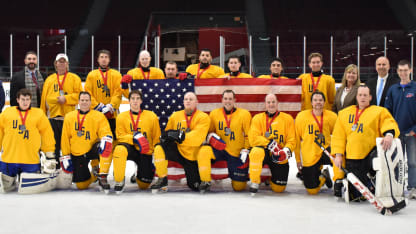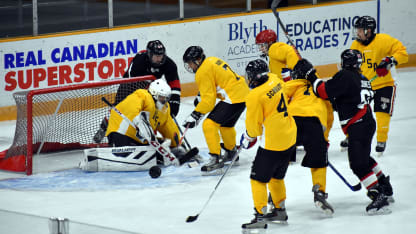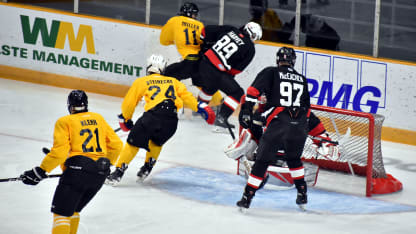Shanley's quest didn't turn up a beeping puck, but it did help launch blind hockey in the United States, which has become the fastest-growing game among the six disabled hockey disciplines. The others, being highlighted by the NHL this week, are sled hockey, special hockey, deaf/hard of hearing hockey, warrior hockey and standing amputee hockey.
"It's really taken off, it probably rivals sled hockey," said Doris Donley, the blind hockey representative for USA Hockey.
Donley said there are 15 blind hockey teams in the U.S. spanning from Seattle to New York.
"Typically, we've seen two or three programs pop up each year," she said. "This coming January, Grand Rapids, Michigan, will be the next program starting."
Shanley, who preceded Donley as USA Hockey's blind hockey rep and is a former member of its national blind hockey team, said there are about 200 blind hockey players nationwide, and the number is growing.
The Washington [D.C.] Blind Hockey Club saw its player roster grow from two in 2016 to 21 this season.
"It's really just awareness," said Nicholas Albicocco, coach and hockey director for the club that plays out of the Washington Capitals practice facility. "Just getting the word out. We do a lot of community outreach -- every six months, we try to do an event with one of the schools for the blind, whether it's Virginia or Maryland."
Participation in blind hockey has surged in the U.S. to the point that a friendly rivalry with Canada, which originated the game in the early 1970s, is blossoming.







